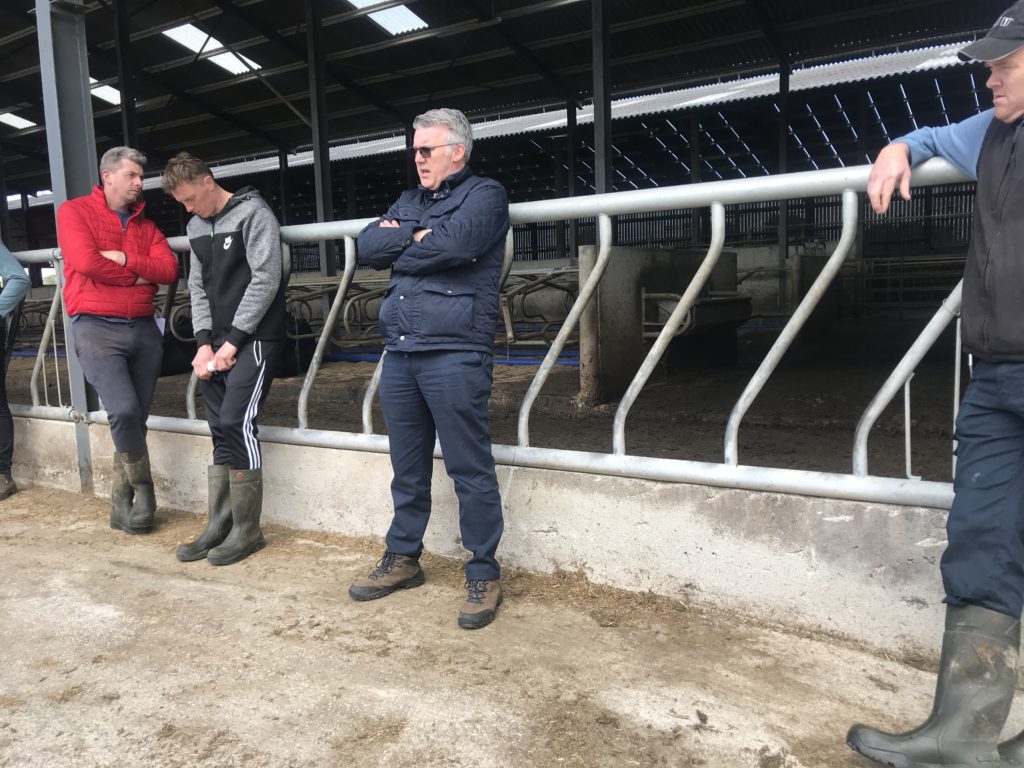Fertiliser prices were a hot topic at the Irish Creamery Milk Suppliers’ Association’s (ICMSA’s) farm walk earlier this week.
The farm walk at Rockwell farm was the ICMSA’s first meeting of the Tipperary Young Farmers Group, the first of a number of groups that the ICMSA plans to start across the country.
The aim of the groups is to encourage young farmers to become involved with ICMSA.
Fertiliser prices
Speakers at the farm walk included Michelle McGrath from Animal Health Ireland (AHI) and PJ Browne from the Fertiliser Association of Ireland and Grassland Agro.
PJ outlined to the group some of the reasons behind the increased fertiliser costs currently being experienced by farmers, and the outlook for prices in the coming years.
He said: “Why have fertiliser prices become so high? It all started with the forced landing of the Ryanair plane in Belarus.
“Ever since then there have be sanctions put on potash that is exported from Belarus.
“Belarus would typically be suppling 40% of Europe’s potash, which is now gone and instantly increased the cost of potash.”

Continuing, PJ said: “Typically, potash was costing – as a raw material – €400/t a few years ago; it’s now up on €700-800/t.
“After that you also had the issue between Russia and Europe with the Nord Stream pipeline.
“There was a lot of political wrangling going on, which led to Russia restricting the supply coming into Europe, which increased the cost of gas.
“Gas is the raw material for producing ammonia, nitrogen, urea – you have to have gas. If the price of gas is up, the price of nitrogen is going to be up.
“The conflict in Ukraine has further exacerbated fertiliser prices. Since Russia invaded Ukraine, there have been a number of different sanctions, including [one] on fertiliser,” he continued.
“About 40% of Europe’s fertiliser was coming from Russia, that has all stopped.
“We only have 60% of the supply we once had going forward, so availability of fertiliser going forward, we believe, is going to be massive issue.
“The only thing that will solve the supply issue is peace in Ukraine and it doesn’t look like that will happen anytime soon.”
Urea
PJ said to the group that going forward, the majority of fertiliser will comprise urea-based products.
He said: “We are not buying any CAN [calcium, ammonium, nitrate] at the moment; the cost of CAN nitrogen versus urea nitrogen is just too expensive.
“Urea is most economical form of nitrogen [and] we believe that going forward, urea-based [fertiliser] will be used much more for the short to medium-term.
“As farmers, we are going to have to learn how to use these products. They are a completely different animal to the CAN-based products, as regards to spreading.
“Make sure your spreader is set-up properly to spread the product. If not, you’re going to have stripping,” he advised.
Outlook for prices
Giving an outlook for fertiliser prices in the coming years, PJ said: “The outlook for prices is not good. We believe that fertiliser prices will be the same next spring as they are today – plus or minus about 10%.
“Availability is the next concern. We are now fishing is a pool that is only 60% the size it once was.
“Fertiliser should be available next spring, but you might not be able to get what you want.
“The only way this issue is solved is by peace in Ukraine, but even with that it could be a number of years before prices come back to a more normal level.”
PJ recommend that farmers get soil samples taken for their farms and develop a nutrient management and fertiliser plan based on these results.
He reminded farmers that lime is the cheapest fertiliser they will spread and if their soil pH is too low, a large proportion of the chemical fertiliser spread will go to waste.
